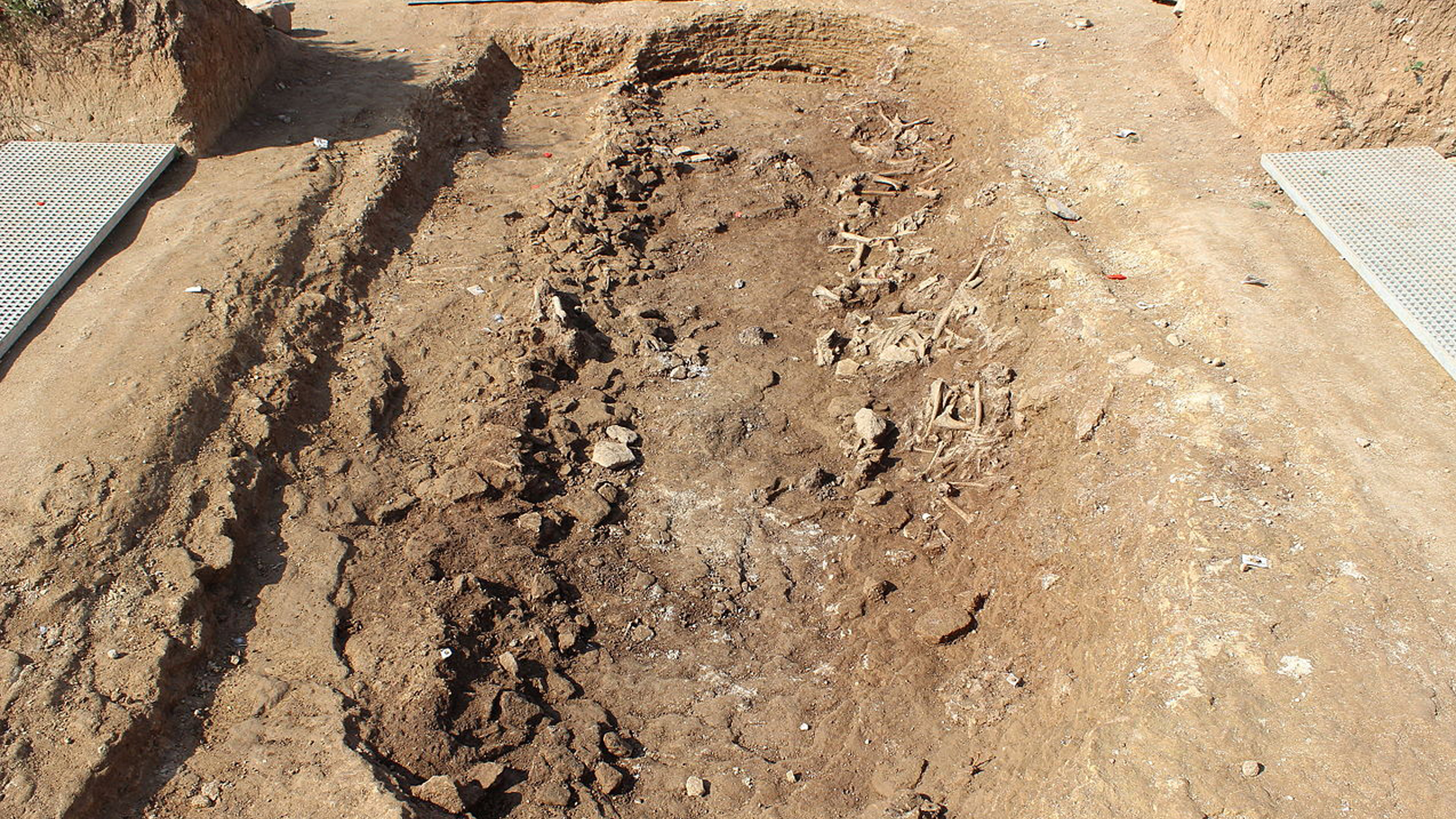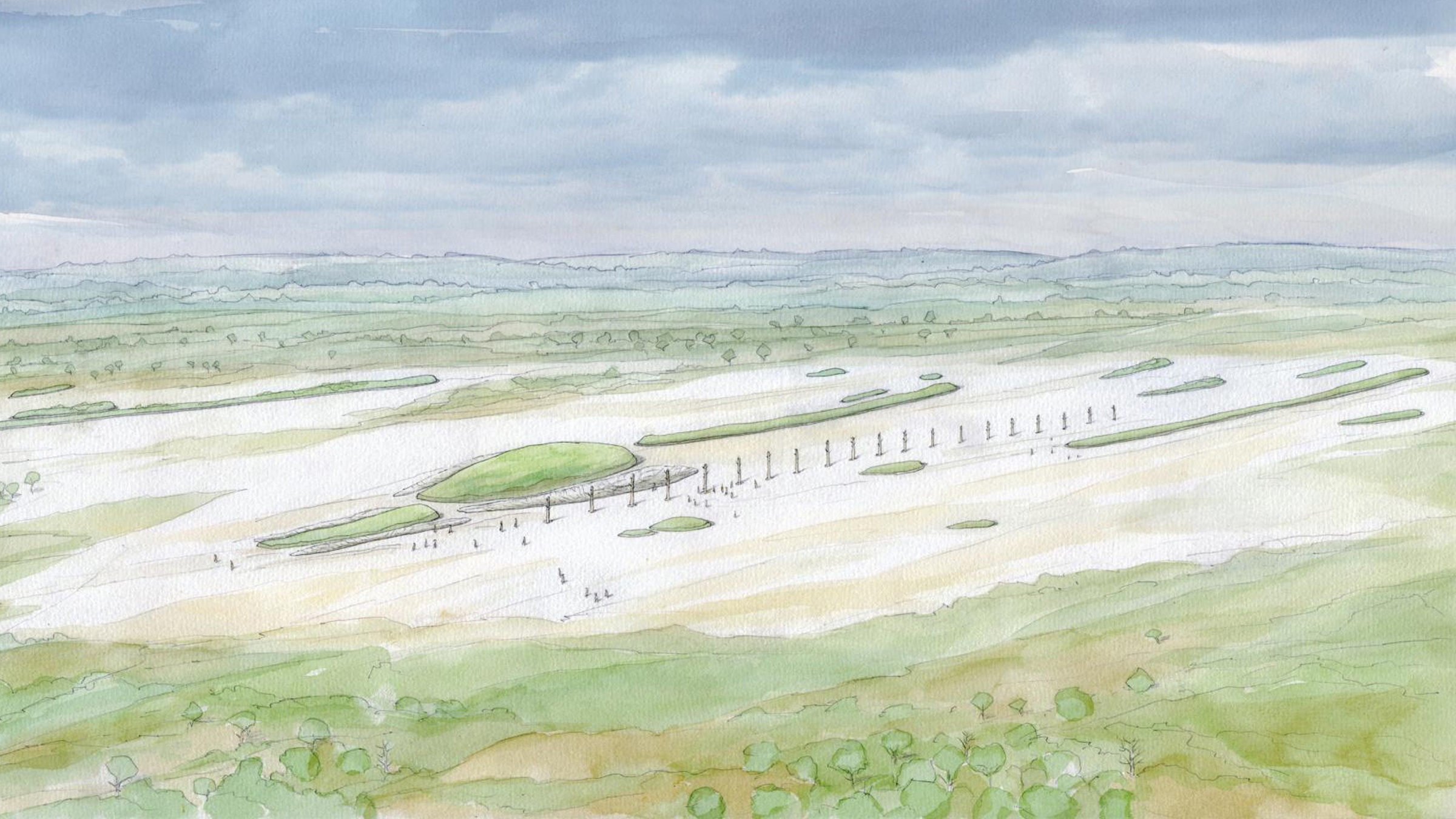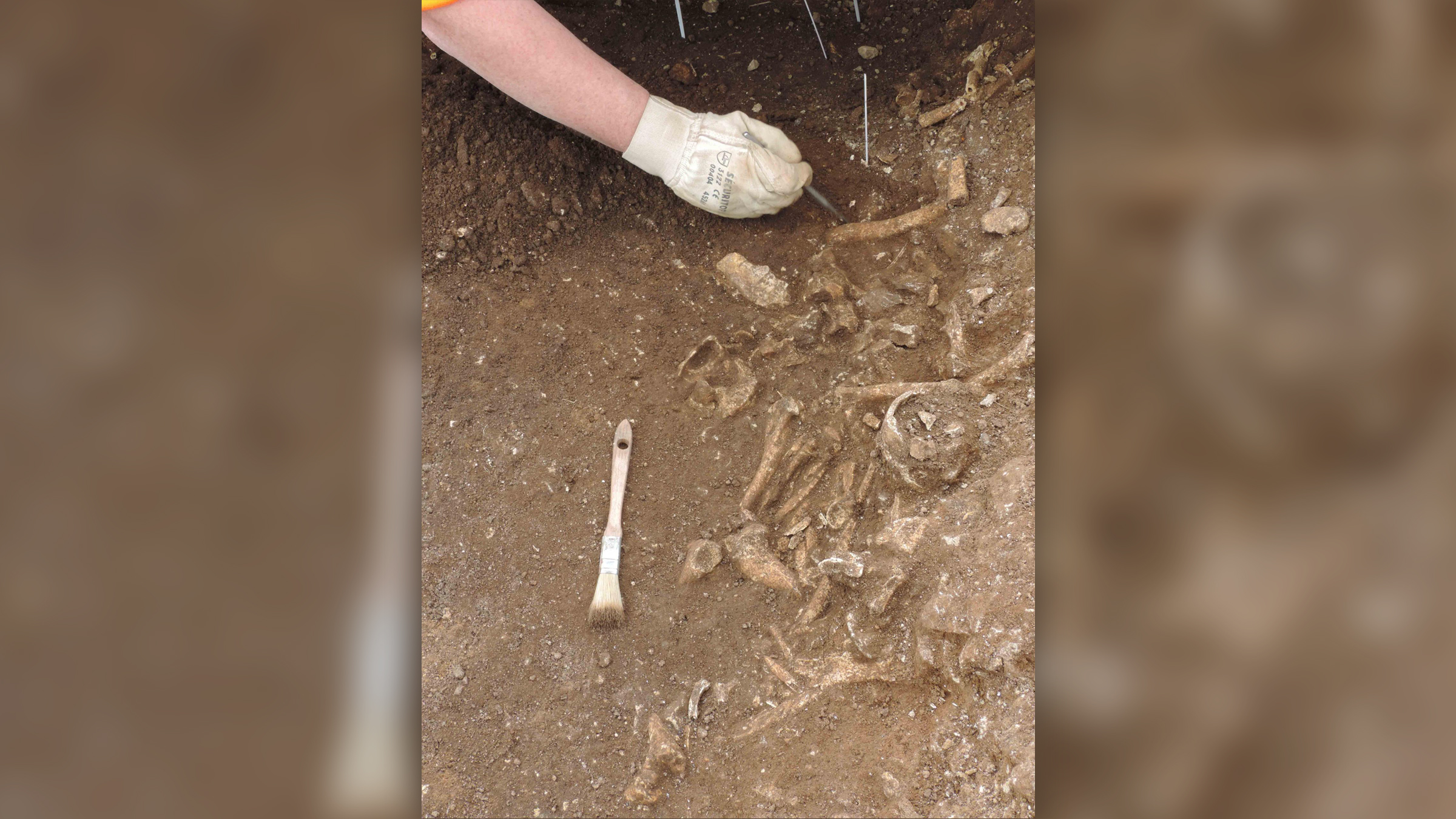
The mysterious 6,500-year-old burial of a woman and several arrowheads in northern France may reveal details of how women were regarded in that society during the Neolithic period, or New Stone Age, a new study finds.
The researchers investigated giant graves known as “long barrows” — large earthen mounds, often hundreds of feet long and sometimes retained by wooden palisades that have since rotted away. Of the 19 human burials in the Neolithic cemetery at Fleury-sur-Orne in Normandy, the team analyzed the DNA of 14 individuals; but only one was female.
The woman was buried with “symbolically male” arrows in her grave, and the researchers argue that she may have had to be regarded as “symbolically male” to be buried there.
“We believe that these male-gendered artefacts place her beyond her biological sexual identity,” said study lead author Maïté Rivollat, an archaeologist and geneticist at the University of Bordeaux. “This implies that the embodiment of the male sex in death was necessary for her to gain access to burial in these gigantic structures.”
Archaeologists attribute the barrows at Fleury-sur-Orne to the Neolithic Cerny culture. Several other Cerny cemeteries have been found hundreds of miles away in the Paris Basin region to the southeast, but Fleury-sur-Orne is the largest yet found in Normandy.

The first monumental graves at Fleury-sur-Orne in Normandy were built in the early Neolithic period about 6,500 years ago. They consist of earthen mounds or “long barrows” up to 1,200 feet long. (Image credit: Laurent Juhel/Rivollat et al, PNAS)
But while the two regions shared the common Cerny culture, there seem to have been local differences about who could be buried in high-status graves. While both men and women were buried in almost equal numbers in the Paris Basin, the cemetery at Fleury-sur-Orne was almost exclusively male, so it was surprising to find a woman in one of the barrows, Rivollat told Live Science in an email.
However, it’s challenging to know what kind life the woman led. “I don’t think we can speculate anyhow about her status — we don’t have enough elements for that,” she said.
More might be revealed about the mysterious Neolithic woman by ongoing scientific work, such as isotopic analysis — an examination of elemental variants in her remains — that could reveal details about her diet and geographical origins, Rivollat said.

Women were buried at other cemeteries attributed to the same Cerny culture elsewhere in northern France. But the researchers suggest that societal rules that only symbolically male “hunters” might have been buried at Fleury-sur-Orne. (Image credit: E. Ghesquière/Inrap)
Neolithic cemetery
The Neolithic cemetery at Fleury-sur-Orne near Caen was discovered in aerial photographs taken in the 1960s, and the French National Institute for Preventive Archaeological Research (Inrap) has led a major “rescue excavation” there since 2014(opens in new tab).
The latest excavations have been huge, covering more than 60 acres (24 hectares) and have revealed several Neolithic barrow graves and other monuments, including the longest barrow ever discovered in Europe, measuring 1,220 feet (372 meters) long.
Rivollat’s team had access to samples of the human remains in the Fleury-sur-Orne barrows; and the new studies of their ancient DNA revealed which remains were male — with an X and a Y sex chromosome — and which were female, with two X chromosomes.
The team also used the samples of ancient DNA to determine any family links between the people buried there, and the scientists found that almost all the barrow occupants were unrelated, except for a father and a son who had been buried in the same barrow.
This clue, as well as other aspects of the DNA analysis, suggested the barrow burials at Fleury-sur-Orne were from a patrilineal community — in which social authority was inherited along the male lineage — while the daughters of a family left to live with the families of their mates, the researchers suggested.
However, the woman buried alongside arrows at the site “questions a strictly biological sex bias in the burial rites of this otherwise ‘masculine’ monumental cemetery,” the researchers wrote in the study. It’s not known if only the flint arrowheads were placed in the woman’s grave, or if they were originally attached to wooden shafts that have since rotted away.
Individuals of power
Earlier studies of Cerny cemeteries in the Paris Basin distinguish one particular category of “individuals of power” by burying them with arrows, quivers and possibly bows — perhaps thereby identifying them as “hunters.”
Those studies showed that such hunters were always men, with stress markers on their bones that were consistent with drawing bows, the researchers of the new study noted, writing that. “Together, the recognition given to the masculine, to archery or to hunting, or even more broadly, to the wild world, characterizes the Cerny ideology in the Paris Basin.”
It’s not known whether the woman buried at the Cerny cemetery at Fleury-sur-Orne was formally regarded as a “hunter” by her community, but “she was buried with four arrowheads, a type of artifact that is considered to be exclusively male in its associations in the Cerny culture,” the researchers wrote in the study.
This, in turn, implied that her burial at the site was an absolute necessity; and that her gender was “presented as masculine, which has granted her access, through the funerary rites, to this monumental cemetery,” they wrote.
Chris Fowler, a senior lecturer in later prehistoric archaeology at the University of Newcastle in the United Kingdom, who wasn’t involved in the latest study but who’s led investigations of Neolithic tombs in the UK, noted the woman buried at Fleury-sur-Orne seemed to have been held in the same regard as the men buried there.
He added that the individuals buried in different barrows were unrelated, and that not all members of the much larger community were buried in the barrows.
“It is fascinating that so many lineages shared the same burial ground while selecting, if you like, just one or two representatives from their lineage to be buried at the cemetery marked by these extensive mounds,” he told Live Science in an email. “This raises further questions about the social and political dynamics among these lineages.”








